Q&AThe Movers And Shakers Of Favre-Leuba Talk Watchmaking And New Challenges
Favre-Leuba’s CEO, Thomas Morf, and Chief Technical Officer Patrick Kury talk about the latest Bivouac 9000, the future offerings of the brand, and the things that collectors of high-end watches should know
May We Recommend
The New Favre-Leuba Raider Bivouac 9000
How would you say the Bivouac 9000 is set to propel your philosophy of ‘Conquering Frontiers’?
Thomas Morf: Conquering frontiers is not a marketing statement; it’s our brand claim and our promise to create exceptional things. It’s the spirit of our founding fathers and we only continue on that path to greatness. The Raider Bivouac 9000 is the perfect example to demonstrate this. It’s a one-of-a-kind timepiece in the world of so many ‘me too’ products. To briefly explain, it is the only watch in the world that can measure the altitude up to 9,000m. It is also water resistant to 30m. Neither of these technical accomplishments have been demonstrated by any other wristwatch and were, until recently, considered almost impossible. Undoubtedly then, Raider Bivouac 9000 truly conquers frontiers.
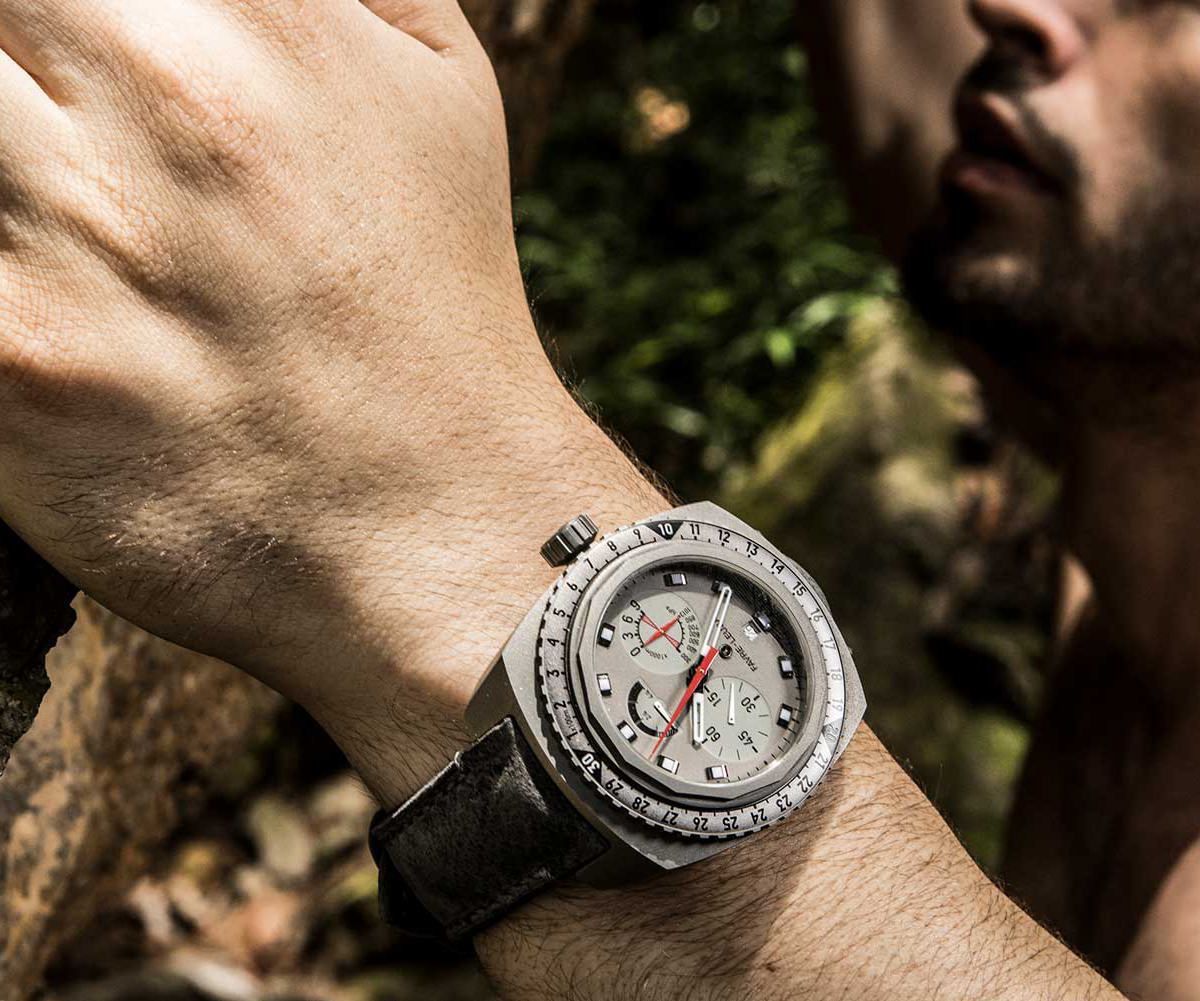
What was the biggest challenge in making the Bivouac 9000, and what would you call its biggest technical highlight?
Partrick Kury: So far, the Bivouac 9000 has indeed been the most challenging watch. The base movement is from EMC and we added a power reserve indication and an altimeter function. A mechanical aneroid altimeter is practically an unexplored feature in wristwatches until now, hence there was almost no technical documentation from the past that we could use as inspiration. Of course, Favre-Leuba produced the first altimeter in the 60s, and that served as a base, but the measuring range was only up to 3,000m. The second challenging part was the case. A usual construction doesn’t let air in the case because it is waterproof, but the Bivouac 9000 must constantly grip the ambient pressure inside the watch in order to show the right altitude and air pressure. Through a slide, crown or pusher, you have to first to let air into the watch, and that was not an option for us. We wanted to have a constant dry-air exchange inside the watch in order to have the altimeter constantly working, and keep the watch waterproof to a certain point.
Favre-Leuba And India
What do you have to say about Favre-Leuba’s association with India?
Thomas Morf: Of course, India has something magical, the people, the culture…so many things to explore. My visits are unfortunately all business-related and there is no time for me to learn more about the country and its people. Favre-Leuba not only has an Indian ownership, but also a strong recall among potential buyers. Many people have someone in their family who still owns a Favre-Leuba. This is great and a fruitful soil to bring the brand back where it belongs.
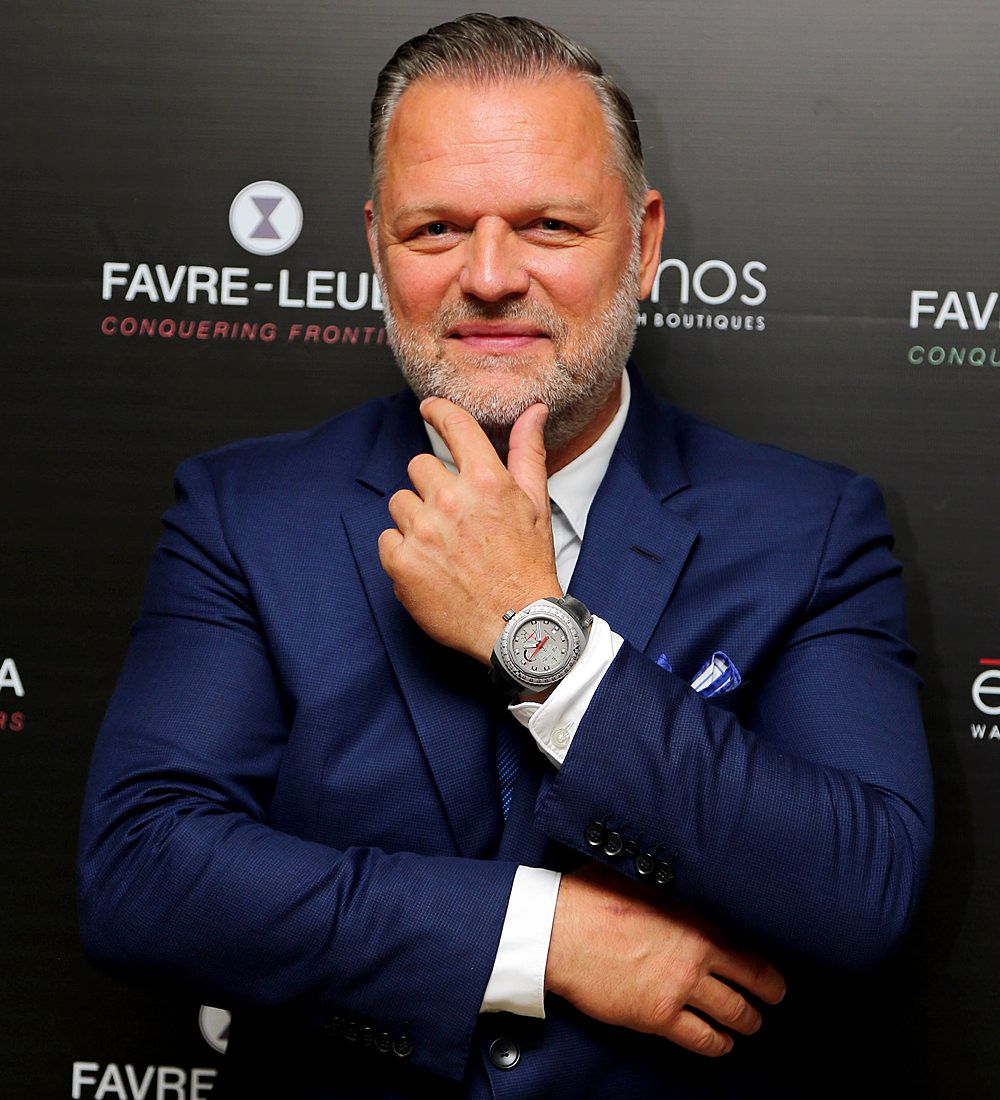
Talk about India as an international market for Favre-Leuba? What do you think of the Indian customer’s knowledge of watchmaking?
Thomas Morf: Indeed, what India and Favre-Leuba share is like an old friendship. It goes back to the 19th century and it never really stopped. In a globalised world, we pursue a global strategy, and India is surely very global in its approach, while also valuing many things local. We have observed that the high acceptance of global technology and design by the Indian market, and hence don’t see any need for local adaptations.
Patrick Kury: India is a fast-growing and learning society. India is even a leader in various fields. As far as the understanding of high-end watches is concerned, it depends on the availability in the market. So far, not all brands are present in the Indian market and the availability of high-end watches is somewhat limited. The understanding and appreciation will grow as the market does. People who have already discovered the world of watchmaking are very well informed and know what a good watch is all about. I know that the buyers walk into a store knowing very well about the technical details of the watch before they make their purchase. It is truly interesting how the country has changed and evolved.
Baselworld 2018: A Sneak-Peek
What can we look forward to from the brand in 2018?
Thomas Morf: Our next highlight will be the Raider Bathy as a tribute to the original Bathy of the 1960s. It will be a diver’s watch with some cool mechanical features. We expect to present this watch at Baselworld 2018. A new model we’re going to present next year will be the Raider Sea King and the Raider Deep Blue in 41mm. This will fill the gap between our offerings from 37mm to 44mm in the Raider collection.
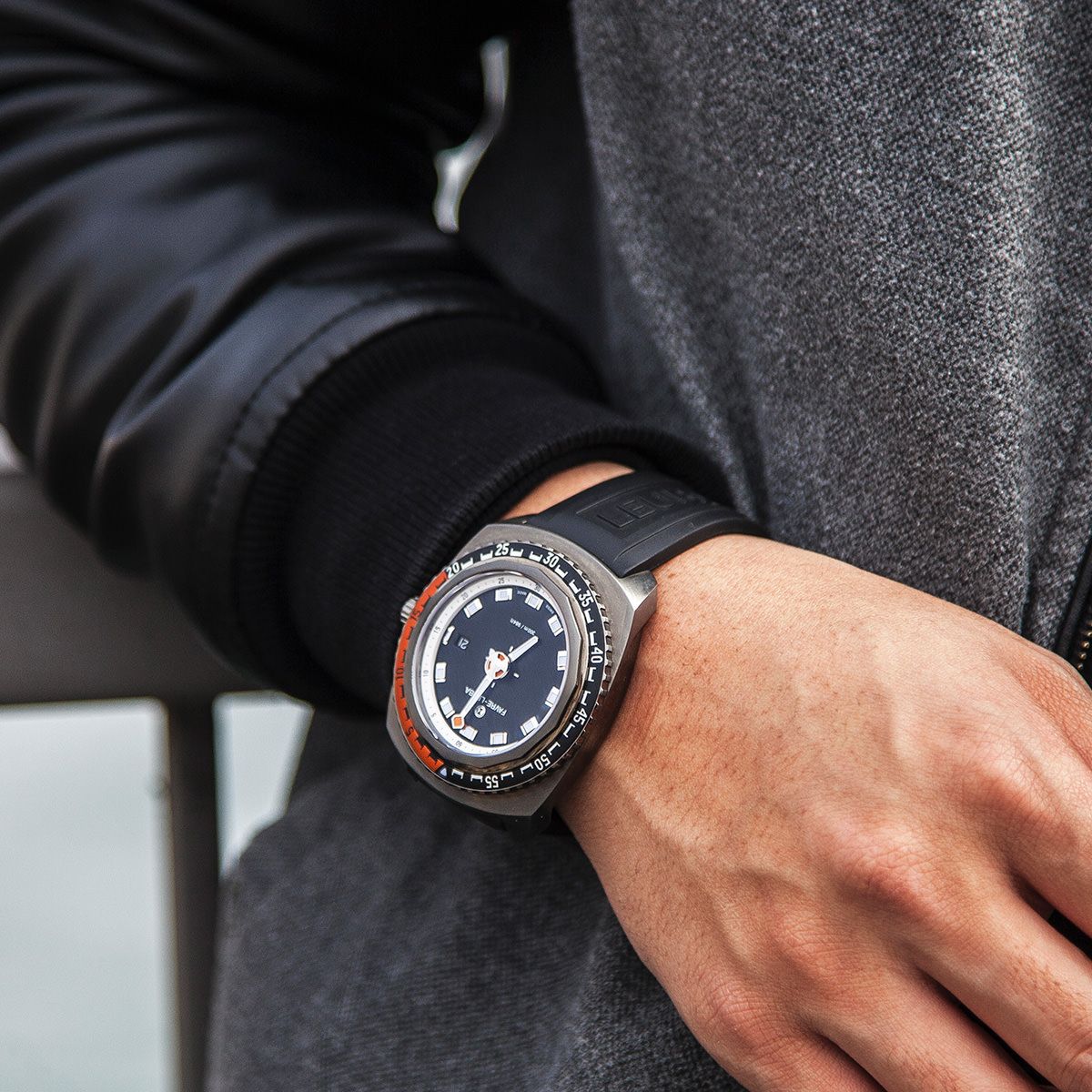
Patrick Kury: We are already working on some very interesting models, one of which you will get to see in about six months – the Bathy 120. But even with this watch, we are not going to reproduce the past; we will present some significant improvement.
Brand Perspectives
How challenging is it to design the look and the mechanism of every Favre-Leuba watch differently?
Patrick Kury: The most important part has been to know the history of Favre-Leuba and to learn what the brand stood for in its rich past. It’s an ongoing process that takes a lot of time, but we did reach a point where we are able to define a clear product strategy for the future. So, the solution came much more from the brand’s past than from personal taste.
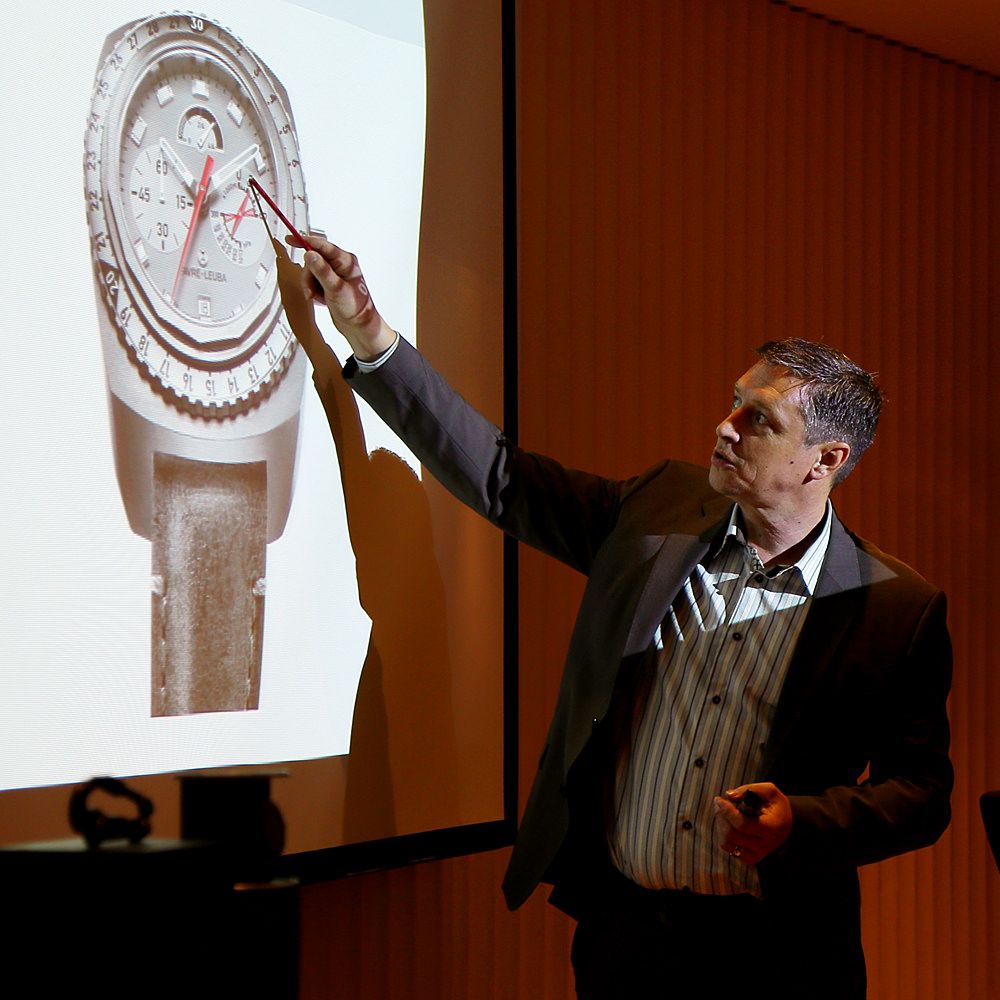
Which is your favourite Favre-Leuba watch, and why?
Patrick Kury: It’s the Bathy from 1968. As we started the new Bathy, we first analysed the original watch and it was impressive to learn how smart and elaborate the construction of the case is. A chamber in the caseback gets flooded and deforms a membrane with rising water pressure. The whole system is adjustable. That doesn’t sound very spectacular for today’s manufacturing technologies, but we have to consider that the watch was developed back in the 60s, where lead joints still were used. From the current collection, my favourite watch is of course the Bivouac 9000. Even though it is a big watch, it fits perfectly on the wrist and the design is very coherent. From a technical point of view, as we started the project, we had a wish list with all functions and indications we wanted to integrate in the watch. At the end, we attained all points on the list with no compromises and this is a very satisfied feeling.
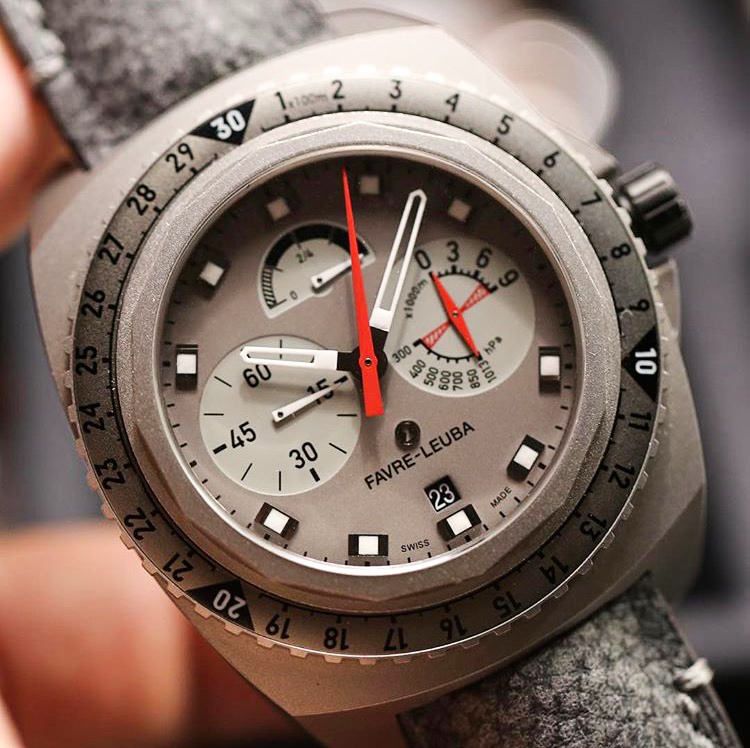
Patrick Kury: Since 1737, Favre-Leuba has always been known for leading technological developments and for a distinctive design language. Following along the brand’s vision and product strategy, keeping the brand fresh is not very difficult. What we design and launch are watches that no other brand has. The true challenge is working on technology that is relevant to the customers, and will prove to be useful, adding value to their lives. Then the task is to manufacture that at a price that gives it great value.
Which Favre-Leuba in-house movements are you most proud of? What makes them special?
Patrick Kury: It is the Calibre 269 with twin barrel and automatic rewinding system. The movement comprises many technical characteristics that are up to date even today.
Does Favre-Leuba intentionally position itself as a brand of bold, large wristwatches, or can we also we expect something more diminutive from the brand?
Thomas Morf: It was important, that Favre-Leuba is represented with a strong and bold product line with a distinctive character. It’s not our strategy to only have large timepieces in our portfolio. In 2018, we will add a nice collection of 41mm models. This will fill the gap in the current collection.
After the Favre-Leuba Sea Bird that gave women a bold, yet feminine watch to cherish, what else can we expect from the brand in women’s watches?
Thomas Morf: When we created the Sea Bird, we wanted to demonstrate the possibility to use the ‘one design’ approach for all Raider models. It clearly shows that this works perfectly, from a 34mm to a 48mm watch. Of course, we want to continue with some more ladies’ models, since we believe there is a void in sporty, yet classic and timeless models for the active woman.

Personal Interest In Watches
Talk about your association with watches. How did it all begin for you? Do you have any interesting watch-related anecdotes from when you were younger?
Thomas Morf: In 1972, there was an eight-year-old boy going to take swim classes every Monday morning before going to school. On his way to the pool, he always passed by a jewellery store. The young boy did window shopping every time and one thing he remembers was a brand called Favre-Leuba. Those watches, with their rotating bezels, caught his attention, because they looked kind of cool. The name of this young boy was Thomas Morf. That was the first time he learnt about Favre-Leuba. Ever since, he has followed Favre-Leuba through time. That’s why I feel honoured to play an important role in the brands representation.
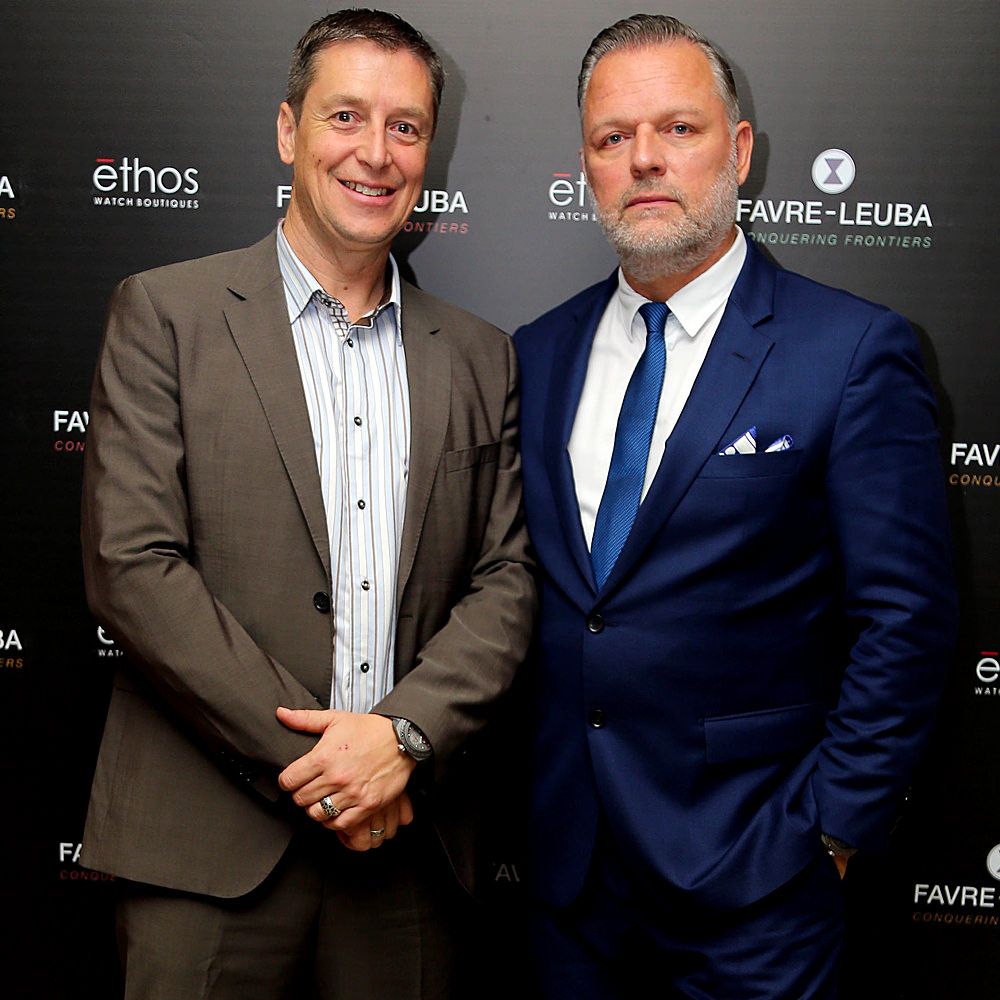
Patrick Kury: I’m a third-generation watchmaker. My father co-owned a watch company for many years and also had a jewellery store. I have been surrounded by watches my whole life. Because my father lived through many crises of the watch industry, he advised me to do something different for living, but after long discussions, my wish was accepted and I could join a watchmaking school in Switzerland. So far, I think it was the right decision.
On Other Brands
What other brands do you admire?
Thomas Morf: I love brands with unmistakable products that don’t follow trends. Timeless classics are the ones I like the most.
Patrick Kury: In future we will have two distinctive fields in the watch industry. On one side, we have the haute horlogerie, where (almost) everything is handcrafted and assembled, decorated and mostly equipped with additional special functions. On the other hand, we have highly industrialised watch and movement productions, where things are automated, robotised, and where artificial intelligence plays a big role. I’m a big fan of the new side of the watch industry, where it is impressive to see the degree of automation, and consequently the quality that big brands such as Rolex and Omega have achieved in the last few years.
Which other watches would one find in your personal collection?
Thomas Morf: I have old Heuer, Zenith, and Chronographe Suisse timepieces in my collection. I used to have many more, but I sold them all.
Advice For Watch Collectors
What, according to you, are the true values of watchmaking that a buyer of high-end watches should be aware of?
Thomas Morf: Authenticity, timelessness, craftsmanship, quality, and perceived value of the brand and product should be key factors in anyone’s buying decision. Never follow short-term trends and brands.
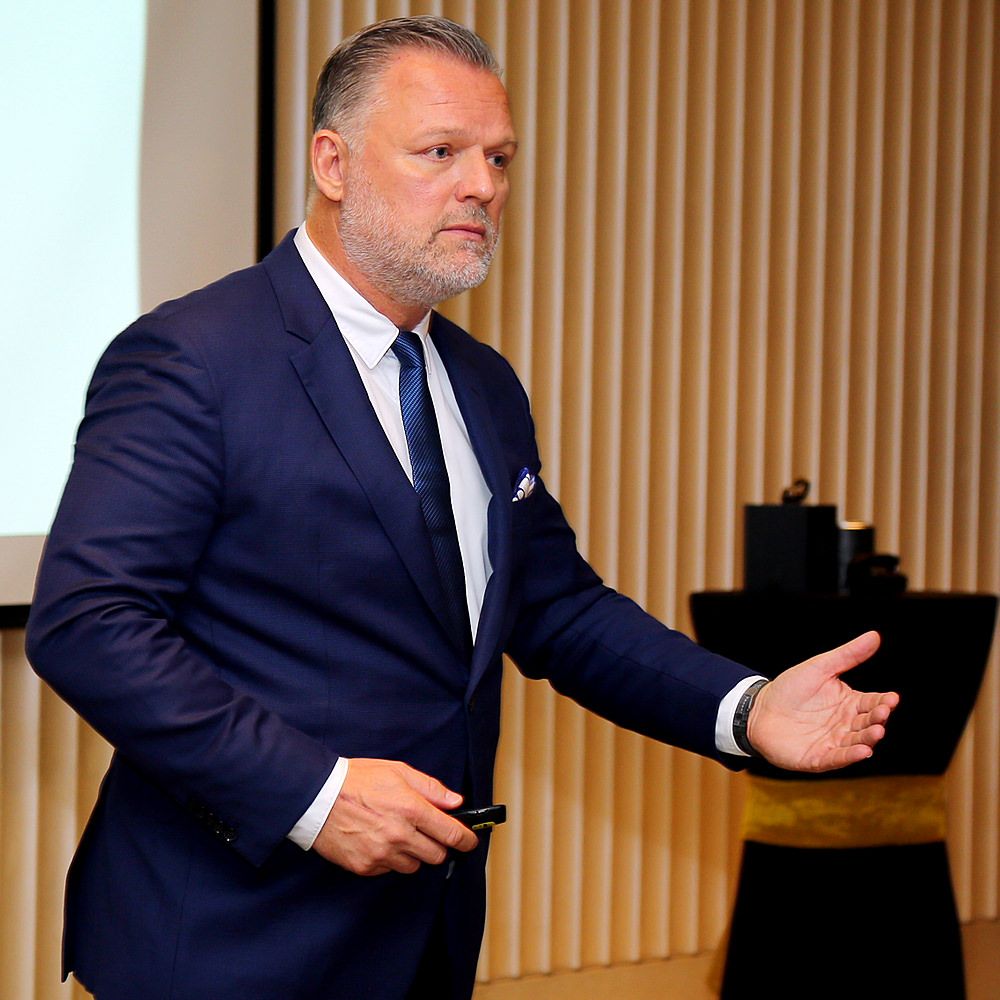
Which high-end complications are a must-have for a collector?
Patrick Kury: A perpetual calendar is always very useful for those who wear their watch every day. A minute repeater is also an impressive complication, considering the large number of components that must work in perfect synchrony.






